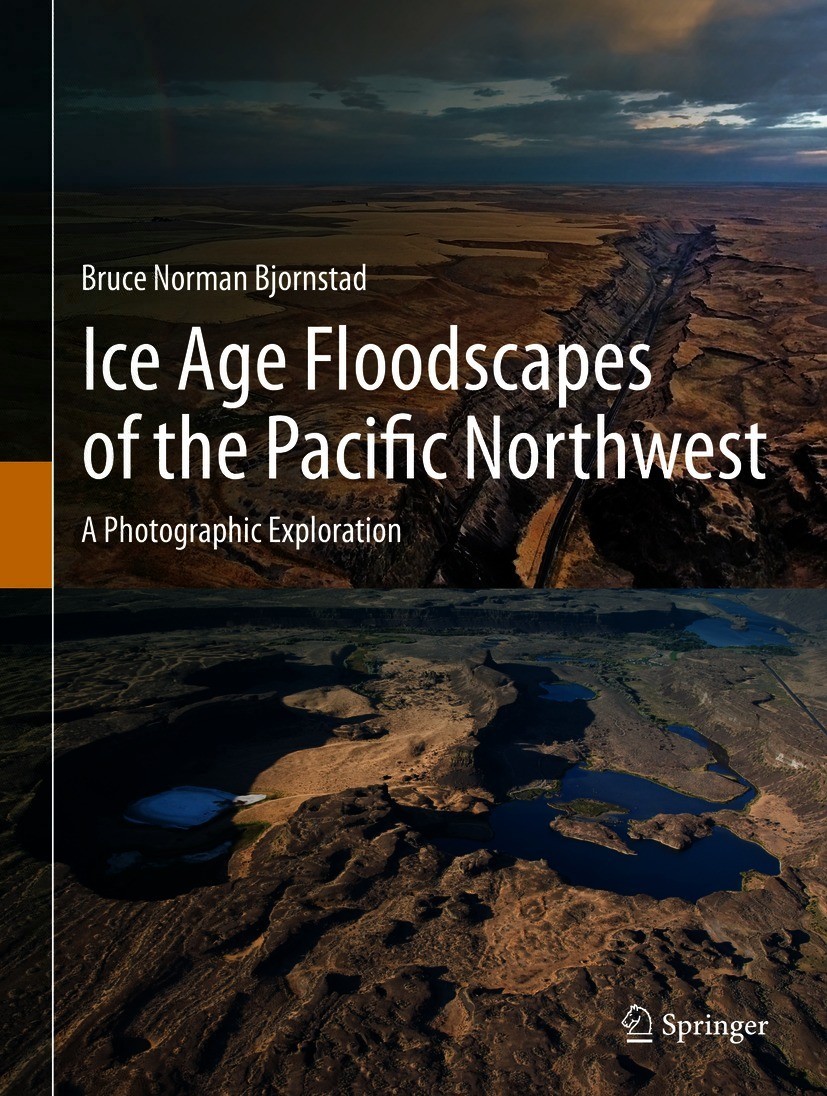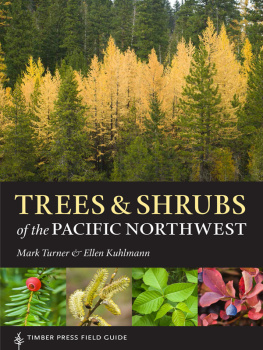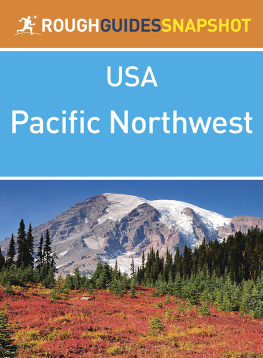Bruce Norman Bjornstad - Ice Age Floodscapes of the Pacific Northwest: A Photographic Exploration
Here you can read online Bruce Norman Bjornstad - Ice Age Floodscapes of the Pacific Northwest: A Photographic Exploration full text of the book (entire story) in english for free. Download pdf and epub, get meaning, cover and reviews about this ebook. year: 2021, publisher: Springer International Publishing, genre: Romance novel. Description of the work, (preface) as well as reviews are available. Best literature library LitArk.com created for fans of good reading and offers a wide selection of genres:
Romance novel
Science fiction
Adventure
Detective
Science
History
Home and family
Prose
Art
Politics
Computer
Non-fiction
Religion
Business
Children
Humor
Choose a favorite category and find really read worthwhile books. Enjoy immersion in the world of imagination, feel the emotions of the characters or learn something new for yourself, make an fascinating discovery.
- Book:Ice Age Floodscapes of the Pacific Northwest: A Photographic Exploration
- Author:
- Publisher:Springer International Publishing
- Genre:
- Year:2021
- Rating:4 / 5
- Favourites:Add to favourites
- Your mark:
- 80
- 1
- 2
- 3
- 4
- 5
Ice Age Floodscapes of the Pacific Northwest: A Photographic Exploration: summary, description and annotation
We offer to read an annotation, description, summary or preface (depends on what the author of the book "Ice Age Floodscapes of the Pacific Northwest: A Photographic Exploration" wrote himself). If you haven't found the necessary information about the book — write in the comments, we will try to find it.
Ice Age Floodscapes of the Pacific Northwest: A Photographic Exploration — read online for free the complete book (whole text) full work
Below is the text of the book, divided by pages. System saving the place of the last page read, allows you to conveniently read the book "Ice Age Floodscapes of the Pacific Northwest: A Photographic Exploration" online for free, without having to search again every time where you left off. Put a bookmark, and you can go to the page where you finished reading at any time.
Font size:
Interval:
Bookmark:


This Springer imprint is published by the registered company Springer Nature Switzerland AG
The registered company address is: Gewerbestrasse 11, 6330 Cham, Switzerland
Bruce Bjornstad is a licensed geologist/hydrogeologist and retired Senior Research Scientist from Battelles Pacific Northwest National Laboratory living in Richland, Washington. He received a bachelors degree in geology from the University of New Hampshire and a masters degree in geology from Eastern Washington University. During his 35-year career, he has written numerous documents and reports on the geology of the region as well as two geologic guidebooks titled On the Trail of the Ice Age Floods that transformed the Pacific Northwest as recently as 14,000 years ago. Bruce is also the creator of an online YouTube Channel titled: Ice Age Floodscapes.
This work benefitted immensely from thoughtful reviews by many highly respected and renowned geologists including Vic Baker, Richard Waitt, Jim OConnor, Gene Kiver, Kevin Pogue, Daniel Mann, and Nick Zentner. Also, helpful in the field, were Andrea Balbas and Tom Cooney. Special thanks go to artist Stev Ominski who, over the last couple of decades, I have appreciated collaborating with to reproduce representative renditions of the Ice Age megafloods, many of which are illustrated herein. Lastly, thanks to Ron Doering at Springer Nature who spawned and supported the idea of producing a visual portrait of colossal floods that shaped the Pacific Northwest.
This book is the culmination of 40 years of musings and scientific study upon the Ice Age floods by the author. Often, an appreciation of the huge scale of the Ice Age floods and the features they left behind are lost upon examination at close range. Thus, aerial surveys often provide the best perspectives for studying megafloods and features left behind. Thanks to recent advances in remote-controlled drone technology, geologists now have a useful new tool to study, understand, and appreciate the incredible scale and variety of landforms resulting from the Ice Age floods. The following pages hopefully will increase the readers understanding and appreciation of the immense power and magnitude of these massive Earth-changing events that occurred so recently in the geologic past.
Clues to repeated devastation are written all over the landscape of the Pacific Northwest. Although individual flood features rarely provide conclusive evidence for large-scale floods, when examined collectively they tell an amazing tale of repeated cataclysms. It was J Harlen Bretz in 1923 who first proposed an outrageous hypothesis that a giant flood produced some very unusual landforms in the Channeled Scabland of eastern Washington. Over the next decade, he meticulously documented his observations and evidence for a great flood of water even though he couldnt explain where the water came from. Early on Bretz used the term Spokane Flood to describe the area from where the water appeared to come. During this time Bretz focused his attention on the field relations and geologic evidence for flooding itself, even though he was uncertain of the exact source of water.
Bretz spent much of his career attempting to convince a mostly skeptical geologic community of his Spokane Flood hypothesis. Others in the profession passionately attacked his ideas because they smacked too much of the Bible and were contrary to Uniformitarian principles. Uniformitarianism holds that geologic changes come about from slow, gradual, steady geologic processes similar to rates we observe today. In short, Bretzs catastrophic flood was too abominable in other geologists eyes at the time. Bretz was adamant in his defense for an Ice Age flood and was resolute that the evidence could not be convincingly explained any other way. Most of Bretzs critics, who never directly observed the evidence, went to great lengths to dismiss flood features as forming from normal glacial or other non-catastrophic processes.

J Harlen Bretz at age 67 (Julian Goldsmith photo)
The only genetic interpretation yet proposed which is inherently harmonious and which fits all know facts is that of a great flood of waterBretz ()
Unfazed by his critics Bretz continued to examine and gather evidence for catastrophic outburst floods for four decades. Later, his ideas gained more acceptance based on confirming evidence viewed from the air like expansive fields of giant current ripples visible on aerial photographs within the Channeled Scabland. Elsewhere, evidence for the sudden, rapid draining of glacial Lake Missoula further cemented the Ice Age flood story. Finally, in 1979, only two years before his death, Bretz was awarded the Penrose Medal, the highest honor bestowed by the Geological Society of America. Finally vindicated, perhaps Bretzs proudest accomplishments were that he was finally viewed as a visionary and that at age 98 he had outlived all his critics.
Thanks to Bretzs challenge, geologists were forced to objectively reexamine their beliefs and accept that some of the most dramatic landscapes on earth result from short-lived, natural, catastrophic events. Bretz opened the door and inspired other geologists to consider the evidence for other catastrophes that produce dramatic change, such as meteor impacts and volcanic eruptions. Bretz and his theory of the Ice Age floods are testaments for the scientific method and highlight the importance of gathering facts, keeping an open mind, and constantly questioning the dogma of our times.
Font size:
Interval:
Bookmark:
Similar books «Ice Age Floodscapes of the Pacific Northwest: A Photographic Exploration»
Look at similar books to Ice Age Floodscapes of the Pacific Northwest: A Photographic Exploration. We have selected literature similar in name and meaning in the hope of providing readers with more options to find new, interesting, not yet read works.
Discussion, reviews of the book Ice Age Floodscapes of the Pacific Northwest: A Photographic Exploration and just readers' own opinions. Leave your comments, write what you think about the work, its meaning or the main characters. Specify what exactly you liked and what you didn't like, and why you think so.






